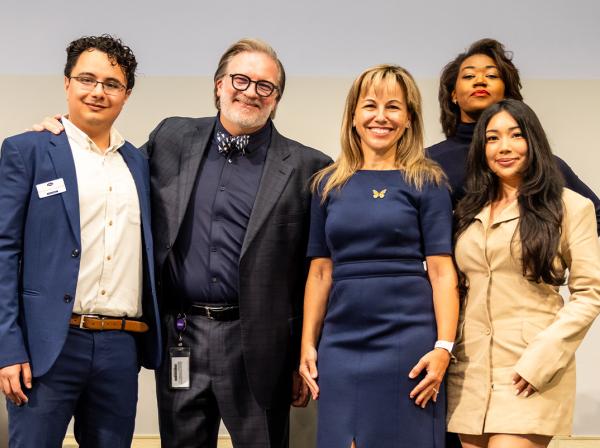Texas Ecology Course Prepares Future Naturalists to Protect the State’s Environments
Associate Professor of Environmental Science Amy Concillio designed the Texas Ecology course for the Environmental Science and Policy major to guide students to take the information from class and apply it to their future careers. This was not the first time Dr. Concillio developed a course inspired by her own academic journey—where she gained a lot of knowledge, but lacked the guidance of how to plug these skills into the real world—she previously created the Natural Resources Conservation and Management course to give her students an idea of all of the careers available to them.
Studying Policy and Science to Conserve Texas Ecosystems
The Environmental Science and Policy major is housed under The School of Behavioral and Social Sciences, as it focuses on the sciences and environmental policies on both a federal and state level, with an emphasis on interdisciplinary education.
“We're a science program, so we're primarily working in the social sciences and the natural sciences, but there are ways for humanities to plug in as well,” Dr. Concillio said. “They know the different ways to do conservation through that course and it also covers the history of ecosystem management in this country and why we do Land Management the way we do.”
The Texas Ecology course teaches students how to familiarize themselves with common state plants and animals and how to study organisms that have adapted to survive the ecosystem’s changes. They also observe climate, soils, geologic formations and disturbances, and how these aspects have formed the ecosystems of the state. Students are engulfed in both the science and policies concerning Texas Ecology. They learn how to engage with stakeholders to discuss necessary conservation science needed for agricultural restoration.


For New Mexico native Vel Jimenez ‘27 (he/they), Texas Ecology was a new way for him to learn about the world around him outside of a classroom.
“I feel what drew me to (the class) the most is that the whole point is to go out in the field and to different environments around Texas and learn how to be a naturalist through real life situations instead of just sitting in like a classroom and learning through a lecture,” Jimenez said. “It perfectly encapsulates what an environmental science class is supposed to be. It goes over the Natural History of our different ecosystems, and then the different types of ecosystems, like all the Texas ecoregions.”
The point of the course is to give students naturalist skills that they can use in the rest of the courses and you throughout their careers.
“So far I've learned some of the laws and regulations we have in Texas,” Jimenez said, “and I feel just knowing a little bit of that just really shapes how you conduct yourself as a naturalist.”


Ecology Field Trips Across Central Texas
Texas Ecology gives the students a sense of where they are, in terms of the ecosystems and what the important species are, what the dominant species are, and how to identify different organisms from different taxonomic groups. According to Dr. Concillio, it’s about learning the “old-school naturalist skills” and natural history which is the beginning of ecology.
Students are frequently encouraged to join Dr. Concillio on a field trip. This year, the class has visited Enchanted Rock, the Water Quality Protection Lands and the Timberlake Biological Research Station outside of San Saba, Texas. They’ve also taken closer field trips to Blunn Creek (behind campus) and Wild Basin Wilderness Preserve, co-owned and co-managed by the university and Travis County.
While Dr. Concillio plans the course to get students out of the classroom and applying skills in the field, this is also her opportunity to use her connections and push students to network.
“I'm always introducing my students when we go to conferences, bringing guest speakers in, introducing students to people who I think that they might want to work with at some point and apply for internships with or go to grad school and apply to work in their lab,’ Dr. Concillio said. “For me it's important for connecting them to jobs and internships, but it's also important again because I'm interested in applied ecology. As an academic, I care about what the needs are on the ground and I want my research to help inform that.”


For sophomore Dalia Zamora ‘27, the interdisciplinary major allows her to explore her multiple passions throughout her college career, and learn about the many areas she can apply her skills. Zamora was interested in environmental studies, and St. Edward’s option of an interdisciplinary major with sciences and policy stuck out to her. She is also a member of St. Edward’s first cohort for the Ecology and Data Science Scholars Program, a program that offers a range of generous and innovative support for high-achieving students in STEM programs.
“I've noticed how the ENSP majors are able to dip their toes in different things. They push so much for students to consider minoring in it, because there's so many things that are tied to it,” Zamora said. “Someone who wants to do business might want to do it sustainably, so they do an ENSP minor. Or (someone) in biology might want to learn about policy communications. I think it's a great consideration if you have any desire to help the world.”

Texas Ecology Visual Story
Follow the student field experiences across the Texas ecosystems through our photo story.


